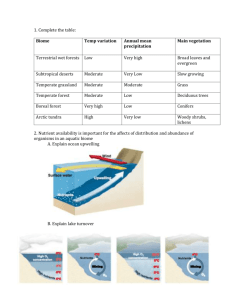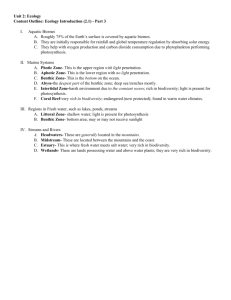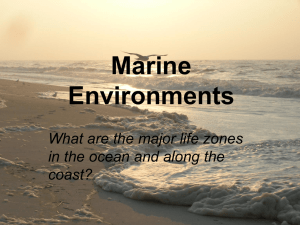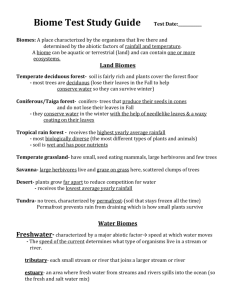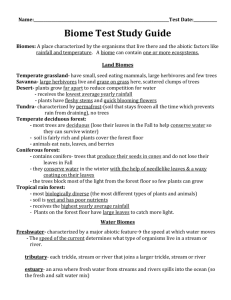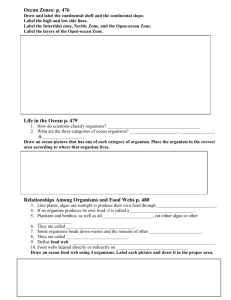Earth Science 12th Edition Vocabulary Chapter 14
advertisement
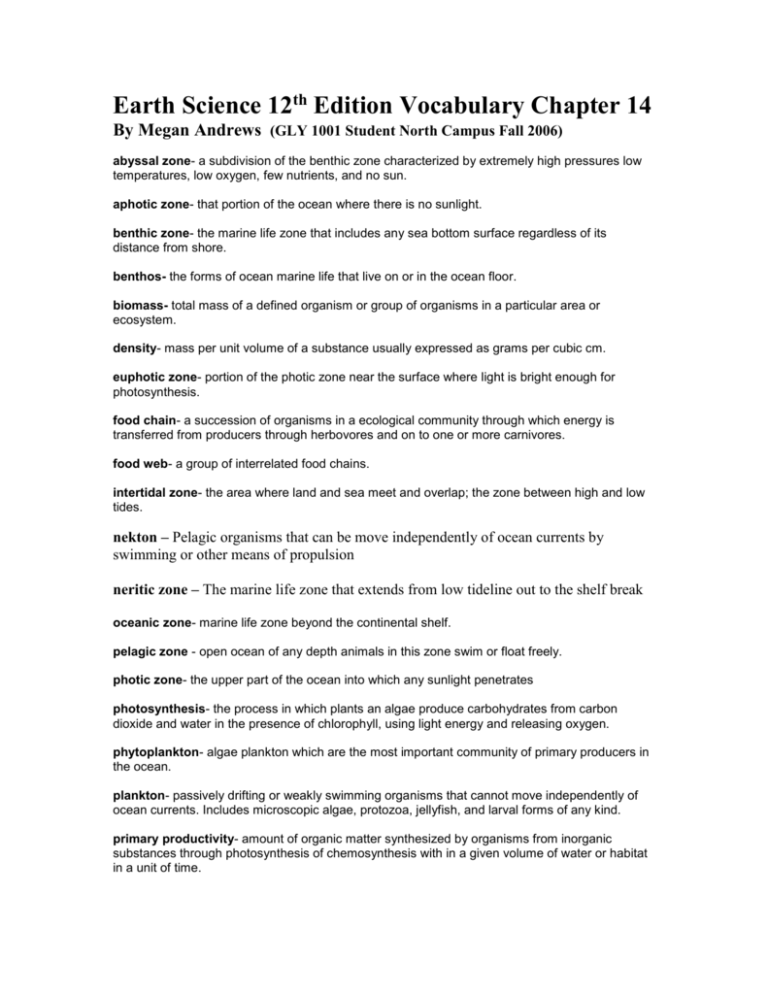
Earth Science 12th Edition Vocabulary Chapter 14 By Megan Andrews (GLY 1001 Student North Campus Fall 2006) abyssal zone- a subdivision of the benthic zone characterized by extremely high pressures low temperatures, low oxygen, few nutrients, and no sun. aphotic zone- that portion of the ocean where there is no sunlight. benthic zone- the marine life zone that includes any sea bottom surface regardless of its distance from shore. benthos- the forms of ocean marine life that live on or in the ocean floor. biomass- total mass of a defined organism or group of organisms in a particular area or ecosystem. density- mass per unit volume of a substance usually expressed as grams per cubic cm. euphotic zone- portion of the photic zone near the surface where light is bright enough for photosynthesis. food chain- a succession of organisms in a ecological community through which energy is transferred from producers through herbovores and on to one or more carnivores. food web- a group of interrelated food chains. intertidal zone- the area where land and sea meet and overlap; the zone between high and low tides. nekton – Pelagic organisms that can be move independently of ocean currents by swimming or other means of propulsion neritic zone – The marine life zone that extends from low tideline out to the shelf break oceanic zone- marine life zone beyond the continental shelf. pelagic zone - open ocean of any depth animals in this zone swim or float freely. photic zone- the upper part of the ocean into which any sunlight penetrates photosynthesis- the process in which plants an algae produce carbohydrates from carbon dioxide and water in the presence of chlorophyll, using light energy and releasing oxygen. phytoplankton- algae plankton which are the most important community of primary producers in the ocean. plankton- passively drifting or weakly swimming organisms that cannot move independently of ocean currents. Includes microscopic algae, protozoa, jellyfish, and larval forms of any kind. primary productivity- amount of organic matter synthesized by organisms from inorganic substances through photosynthesis of chemosynthesis with in a given volume of water or habitat in a unit of time. pycnocline- a layer of water in which there is a rapid change of density with depth. salinity- the proportion of dissolved salts to pure water usually expressed in parts per thousandth. thermocline – A layer of water in which there is a rapid change in temperature in the vertical dimension. trophic level – A nourishment level in the food chain. Plant and algae producers constitute the lowest level, followed by herbivores, and a series of carnivores at progressively higher levels zooplankton – Animal Plankton
